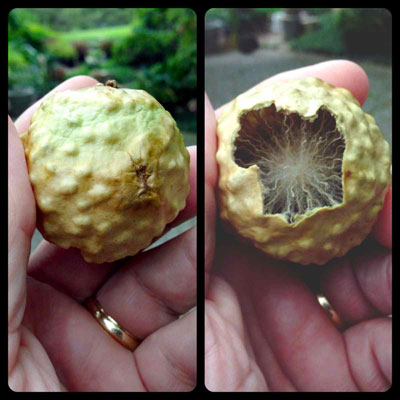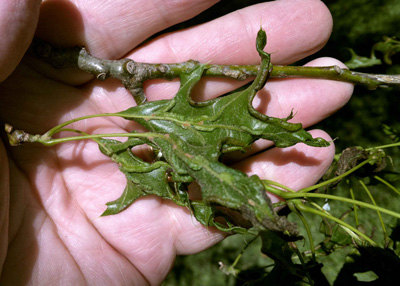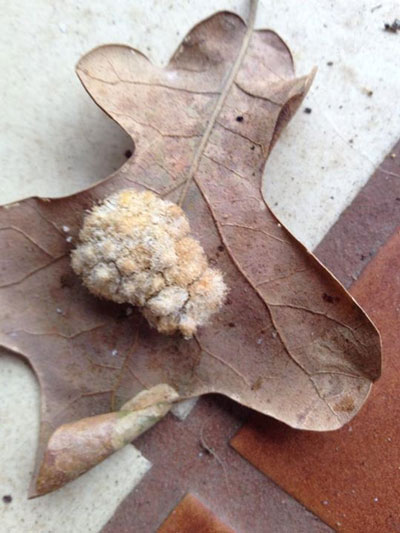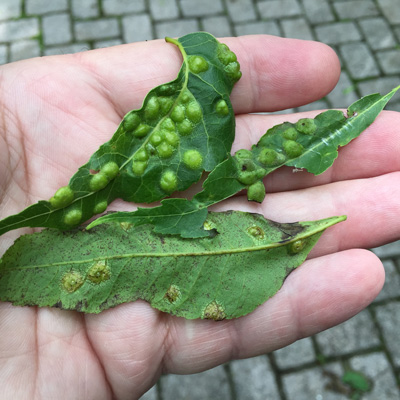Insect Galls
Several of our most common shade trees have galls on their leaves and small twigs. Oaks alone have several hundred different types. Cottonwoods, hackberries and even our majestic state tree of Texas, the pecan, is subject to galls.
Galls are caused by a wide variety of insects. The adult female insect stings the plant tissue and deposits her eggs in the process. An enzyme deposited at the same time causes abnormal plant growth around the mass of eggs, and that growth becomes the gall. It serves as the home to the developing larvae, and it protects them until they are ready to emerge.
Because the female is present on the host tree only for a matter of minutes, and because she doesn’t actually feed on any of the plant tissue, spraying is futile. Systemic insecticides might offer very limited help with the developing larvae, but generally they are not useful, either.
The good news is that most galls do very little real damage to their host trees. It’s usually best simply to leave them alone and let them run their course. Some years will be worse than others, but rarely will a tree be held back by their presence.
Some of the most common galls you’re likely to see:
Oak apple gall on Shumard red oak (shown below)

Shumard red oak apple gall
Pocket vein gall on Shumard red oak leaves (edges of leaves look crimped, like edges of can of food — shown below)

Pocket vein gall on Shumard red oak
Wooly oak gall on live oak (pea-sized fuzzy galls on backs of leaves; often clustered)

Wooly post oak gall
Woody oak gall on live oak (marble-sized woody galls on live oak twigs)
Nipple gall on hackberries (shown below)

Close-up of hackberry nipple gall
Pecan phylloxera galls on pecan leaves in spring can be lessened with thorough coverage with dormant oil spray in late winter. (shown below)

Pecan phylloxera galls on pecan leaves
